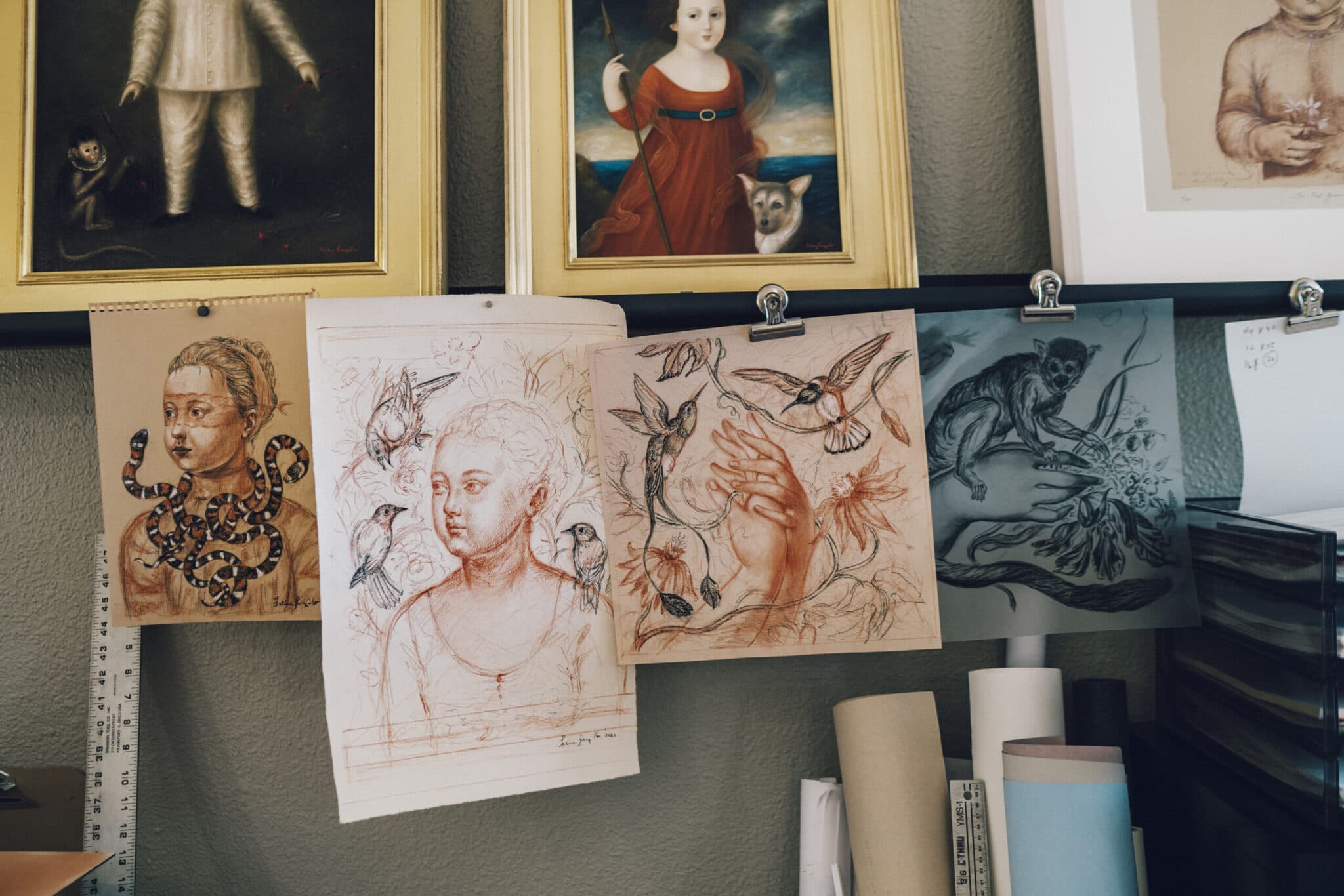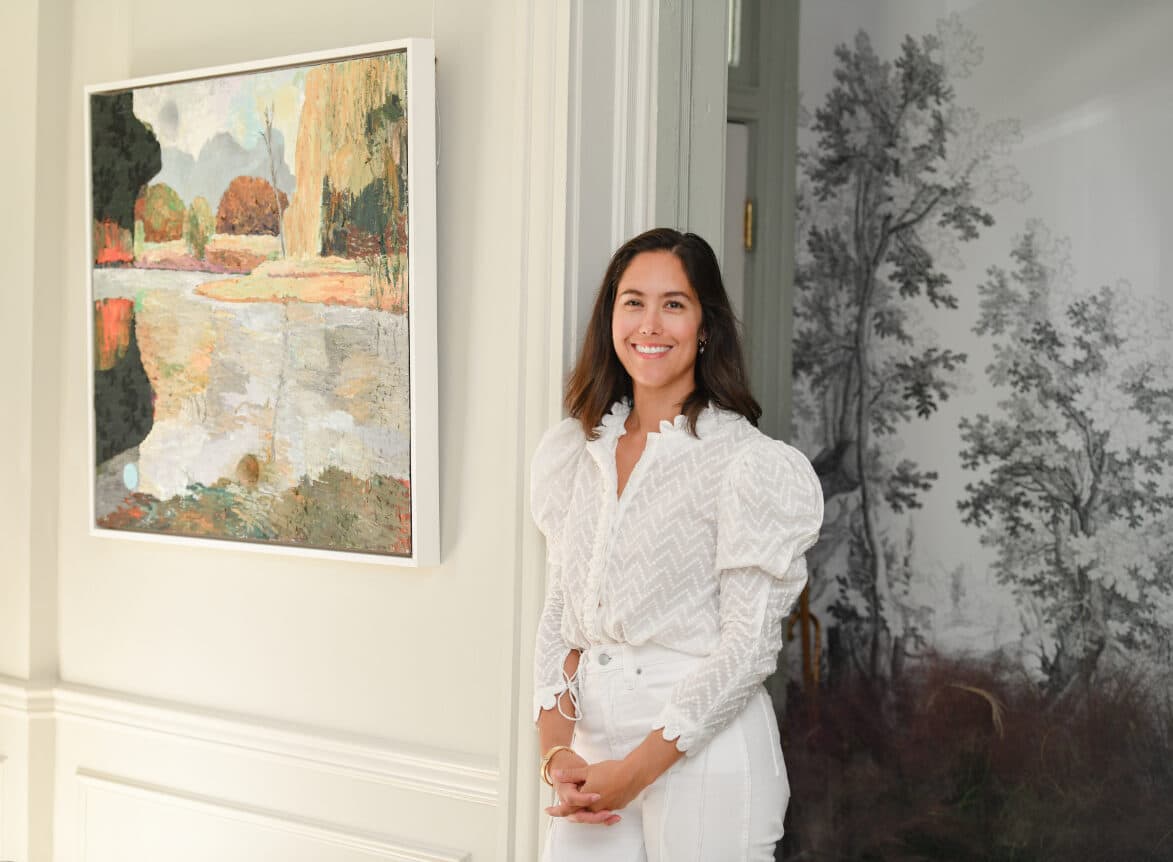A child grows up in a small town in the Philippines, absorbing Catholic iconography and poring over the faraway images in her grandfather’s copies of National Geographic. At age 11, she moves to Texas and falls in love with Shakespeare and Gabriel García Márquez before migrating to Santa Fe, steeping in its Spanish, Mexican, Native American and Anglo mix while studying the imagery of Titian and Watteau. Out of this powerful stew emerges the fine art of Fatima Ronquillo, which transports with its deep sense of mystery.
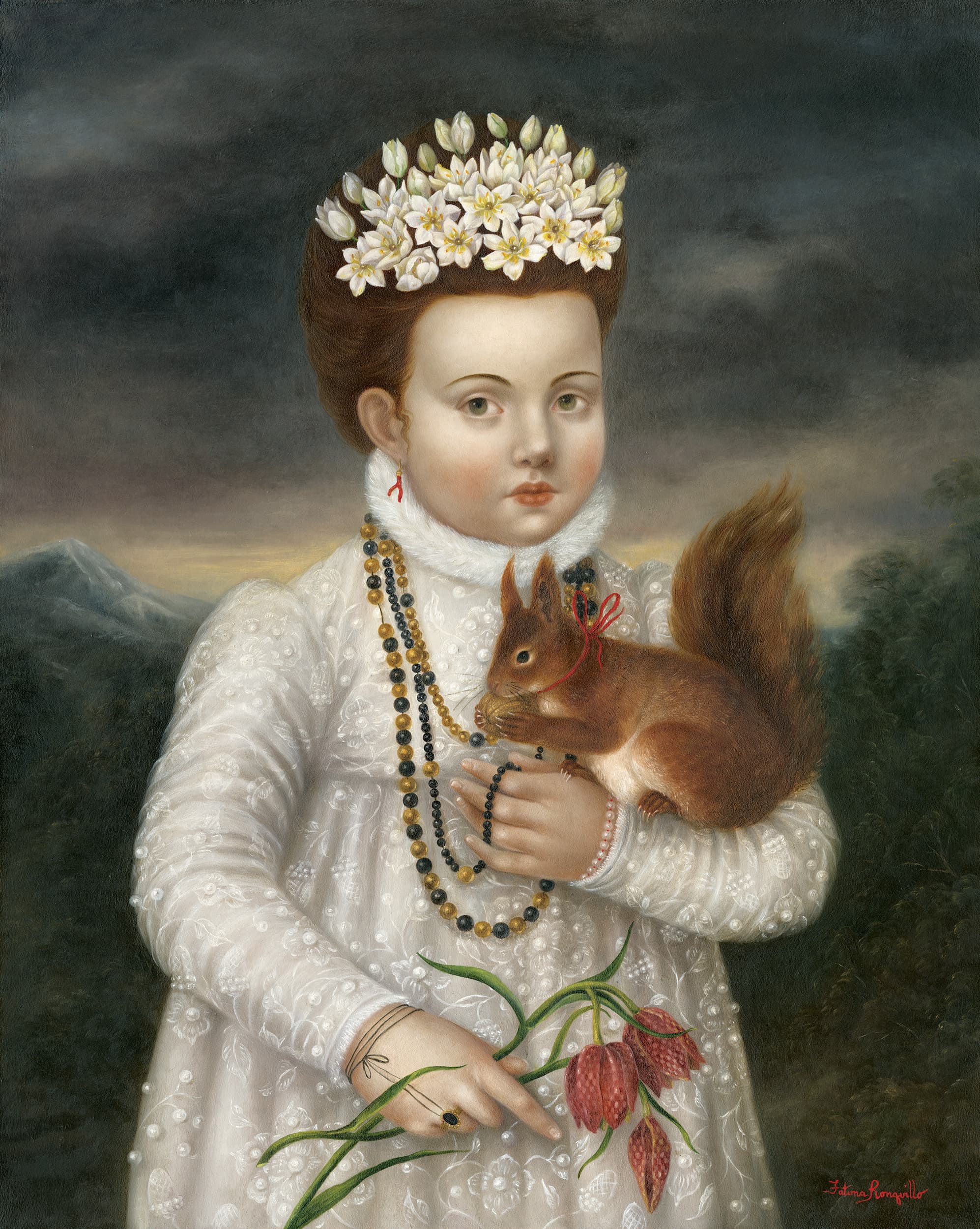
From the elaborate clothing to the beribboned wrist and exotic fritillaria in her hand, Flora with Red Squirrel (2022) is filled with Elizabethan influences and repeating patterns. The squirrel—inspired by Albrecht Dürer’s Renaissance watercolor depictions of the same subject—and Flora’s red hair provides brilliant contrast in an otherwise white and gray canvas. 20×16 inches, oil on aluminum, private collection © 2022 Fatima Ronquillo
Working intuitively without models, the self-taught painter takes all of these influences into her studio and emerges with beguiling compositions that trickily bend myth and reality to the will of the artist. The awkwardness of her subjects is purposeful, meant to evoke a personal response from the viewer. Her central ideas, meanwhile, often come from literature or classical mythology. “I travel to other places in my mind when I read, which provides a starting point,” says Ronquillo.
-

Ronquillo in her light-filled Santa Fe studio, where
she typically spends six hours a day painting. Animals are a common theme, which she says are “repositories of our unspoken hopes and sympathizers with our disappointments, and celebrated and mourned in the same fashion as their humans.” -
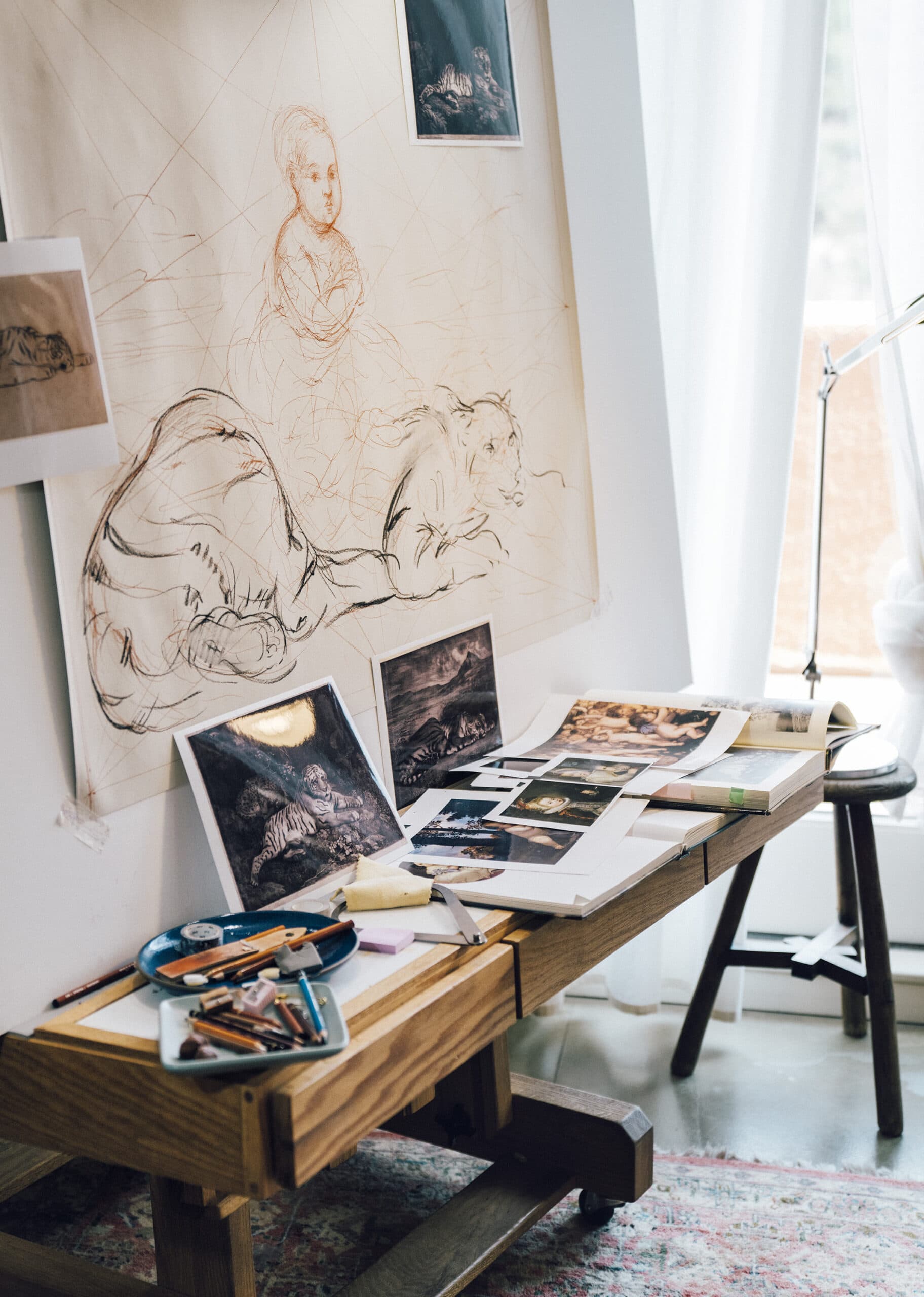
This gestural sketch in progress of a winged child riding atop a tiger draws equal inspiration from William Blake’s poem “The Tyger,” Eugène Delacroix’s studies of tigers, and George Stubbs’s 17th-century renderings of leopards.
Ryan Heffernan
Once an idea is formed, she does some gestural sketches and one good study, and then lets the work evolve. “I like to have an opening for the painting to go another way, for things to subconsciously seep through. When I’m drawing, I have all kinds of references out, but then when I’m painting, I put them all away and pretend I’m back in the Renaissance when they didn’t have computers and this enormous catalog of images.” The resulting subjects, with their nods to the old masters and baroque sense of opulence, have an otherworldly feeling, ambiguous and out of time—and yet completely of Ronquillo’s own very particular era.
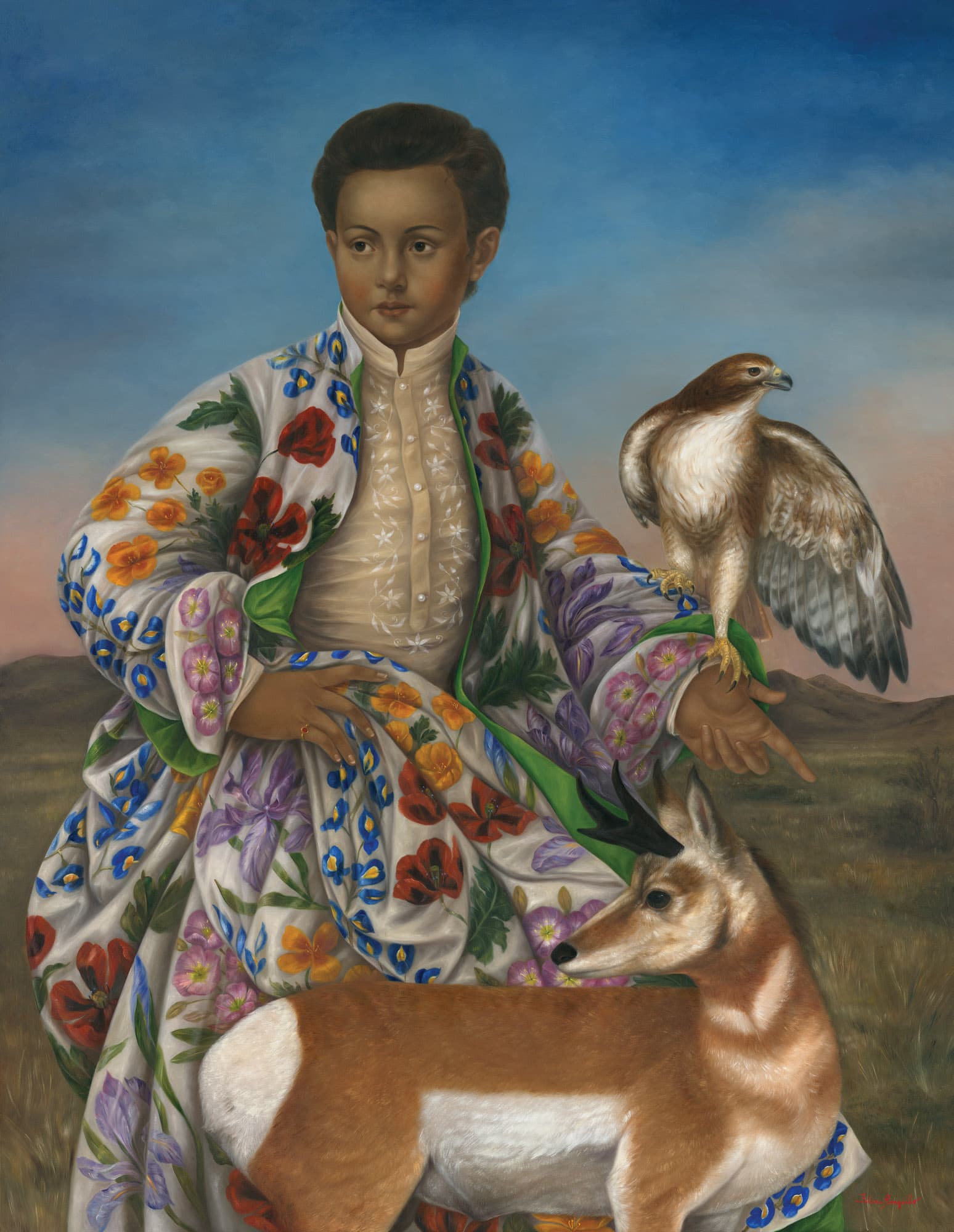
“Borderlands”, 41×32 inches, oil on aluminum, private collection © 2022 Fatima Ronquillo
This article originally appeared in volume 7 of Frederic Magazine. Click here to subscribe!















